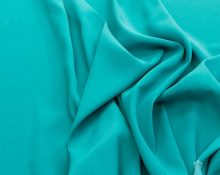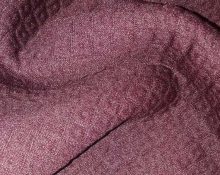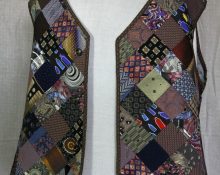
creativecommons.org
A blouse without cuffs is a versatile outfit for the office and for the weekend. In this material we will talk about a blouse without cuffs, tell the history of the origin of the blouse and cuffs as separate elements of clothing. At the end of the article, we will provide recommendations on what to wear with blouses without cuffs and provide a selection of universal looks.
History of the blouse
The first prototype of a blouse appeared in the 14th century BC in Ancient Greece and was called a chiton. It was worn on a naked body and this version of the proto-blouse served as outerwear. Like most of the first clothing, chitons were universal capes - they were worn by both women and men. Later, clothes of a similar cut appeared among the ancient Germans, but for them these blouses served as underwear, which was worn under thicker clothes.
In Rus' there was also a prototype of a blouse - a shirt made of linen or wool. Initially, this item of clothing was sleeveless and resembled a sleeveless vest, but later sleeves began to be sewn into the side armholes.
The breakthrough for blouses (they were called differently then) was the 14th century. France, as always, became the leading country. It was then that, thanks to Parisian tailors, the blouse acquired its modern shape: it began to be sewn from the finest fabrics (cambric and silk), and also began to be decorated with additional elements, collars and cuffs. And all this beauty was worn exclusively by men. Women first began to wear blouses in the 18th century, but these were rather exceptional cases. The breakthrough happened in the 40s of the 19th century, when dividing a dress with a single cut into a bodice and a skirt came into fashion. In Victorian England, blouses were worn by women as loungewear. At the beginning of the twentieth century, blouses began to be considered part of women's underwear and were often complemented with lacing and decorative embroidery. Later, so-called Charles Gibson style blouses with wide sleeves and cuffs appeared. In the 1920s, the first blouses without cuffs appeared, which were more reminiscent of men's.
History of cuffs
The first cuffs appeared in the 16th century in France and looked like lace frills on the sleeves. It is noteworthy that at that time lace was worn primarily by men. There were even special double lace cuffs, in which the top lace was narrower than the bottom. The word manchette itself can be translated as “sleeve.” But cuffs gained real popularity later, in the 18th century, when not only the nobility, but also fashionistas began to wear them. In those days, cuffs were quite expensive and were taken care of. So there was an expression “to have cuffs”, meaning to be afraid. The fact is that students who had cuffs sewn on did not participate in fights, since there was a high risk of tearing or staining their new clothes. Almost immediately, European tailors began to harmonize the appearance of cuffs and collars.For example, in the 17th century, cuffs were predominantly lace and combined with a collar in the style of Mary Stuart, and already in the 18th century, cuffs became pleated, as the fashion for pleated frill collars appeared. By the 19th century, cuffs acquired a completely modern, minimalistic look, and a century later, the first blouses and jackets without cuffs appeared.
What to wear with modern blouses without cuffs

creativecommons.org
Blouses without cuffs are a universal option for the office and home. This style is good for its unpretentiousness. This blouse will look best with jeans or simple dress pants. This style is also suitable with a sports skirt without decoration. Underneath, you can wear a crop top or a basic top that matches the color. The blouse itself without cuffs implies a sporty style, so you can wear sneakers or plain ballet shoes on your feet.


 0
0





